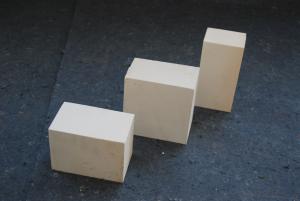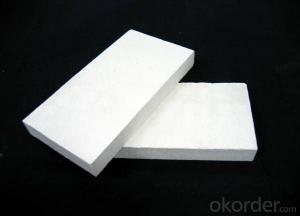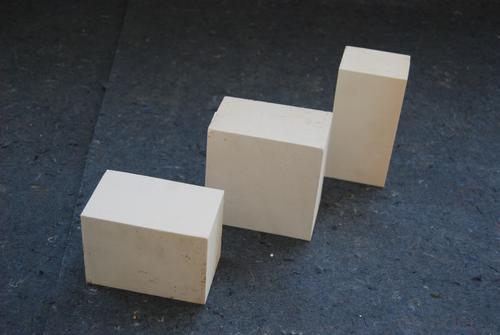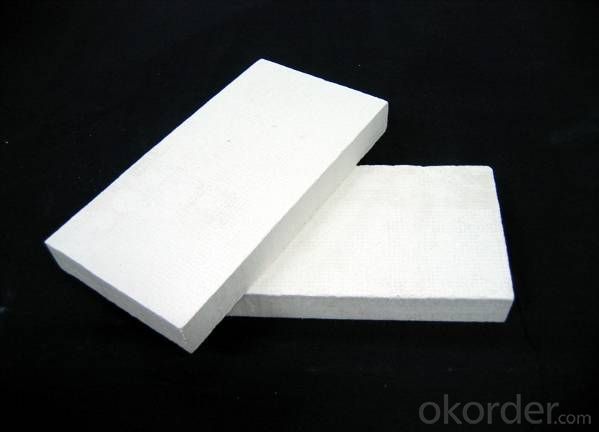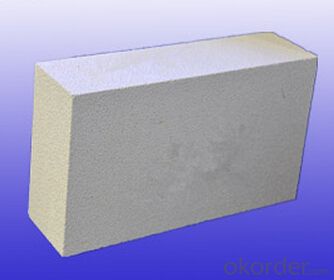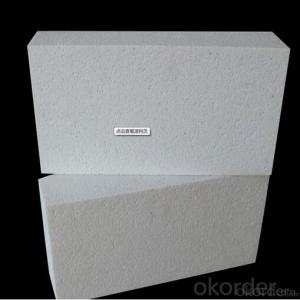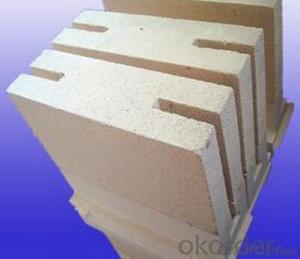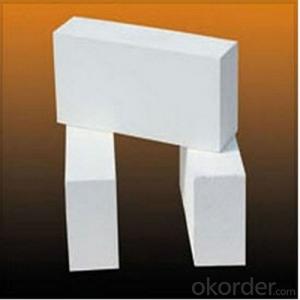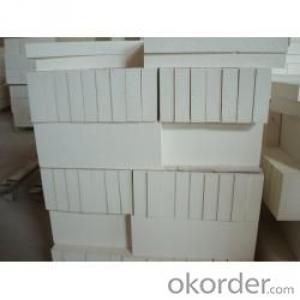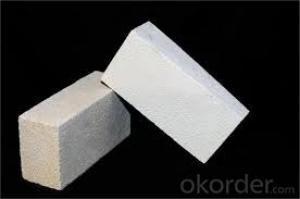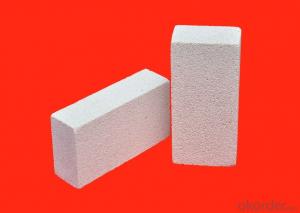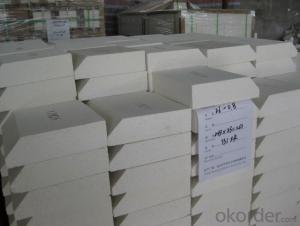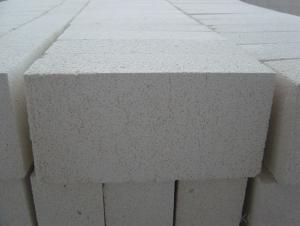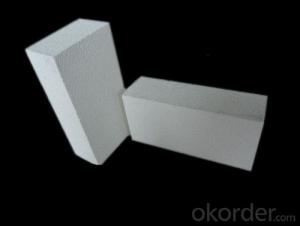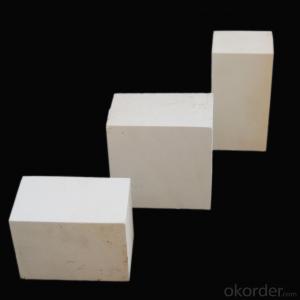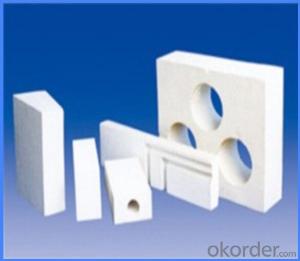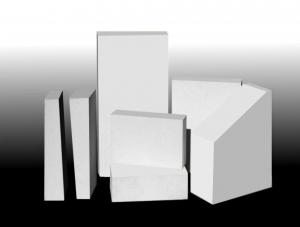Insulating Fire Brick - Refractory JM Mullite Insulation Brick B-6
- Loading Port:
- Shanghai
- Payment Terms:
- TT OR LC
- Min Order Qty:
- 10 m.t.
- Supply Capability:
- 1000 m.t./month
OKorder Service Pledge
OKorder Financial Service
You Might Also Like
Specifications
Low density.
2. Classification temperature:1610-1780.
3. Thermal insulation energy-saving effect is good.Refractory mullite insulating refractory brick JM 23
Okorder series heat insulation brick
Okorder series thermal insulation brick is an effective, energy saving, low carbon, environmental protection advanced, according to the ASTM standard manufacturing products. Okorder series products are best Li Ning and insulation in all types of industrial furnaces in the metallurgical field, aluminum, petrochemical, electric power and glass ceramic materials. They can be used as part of the working layer of thermal insulation or non - melting. Products have been widely used in the following furnace, achieved satisfactory results.
Application of heat preservation brick
Metallurgical Industry: blast furnace, hot blast furnace, heating furnace, etc..
Petrochemical Industry: ethylene cracking furnace, hydrogen production furnace, primary reformer, heating furnace, etc..
Ceramic industry: roller kiln, kiln, etc..
Glass industry: glass furnace regenerator, etc.
Carbon industry: carbon furnace, etc..
Aluminum electrolysis industry: aluminum reduction cell, etc.
Other industries: tunnel kiln, shuttle kiln, etc..
Advantages of heat insulation brick
Low thermal conductivity: more porosity will bring good thermal insulation effect, energy saving.
High crushing strength: high crushing strength, volume stability.
Low heat storage: small heat storage to absorb more heat, energy-saving effect is obvious.
Gao Chundu: iron, alkali metal impurity content is low.
The precise size: Brick size processing precision, special shape cutting and grinding, accelerate the brickwork.
Insulating brick picture
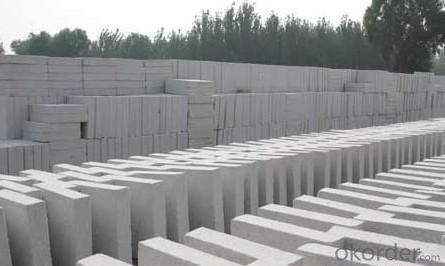
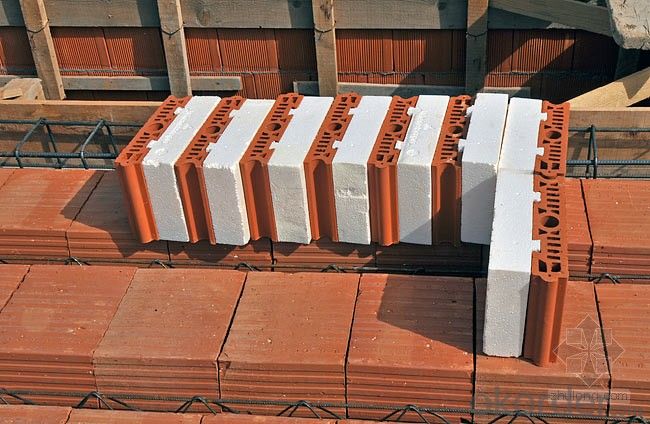
Common problem solutions
1. What products do you have?
We have all kinds of refractory bricks, refractory casting materials, mortar, cement, ceramic fiber products, etc..
Or you can browse our products to choose what you need.
2. How to control product quality?
With strict quality control system throughout the material selection and production process, we have the quality of refractory materials and ceramic fiber products to meet customer requirements.
From the selection of raw materials, the quality of our control to start. The quality certificate of the raw material is required, each batch of the products are to be tested in the use of the forward line. In the production process, the quality control by the workers, and then each piece of classification, and through the quality supervision and inspection.
3. Can you give me a brief introduction to the application of your product?
My company is mainly engaged in refractories in the steel, cement, glass, ceramics, petrochemical, electric power and other industries.
4. What information do you need if I need you?
In order to select the right products, we will provide us with information, such as the United States, technical data, order quantity, product application, etc..
If you have any questions, please contact us.
High alumina insulation brick,Insulation brick,Fireclay insulation brick
Features:
1. Low thermal conductivity.
2. High strength and resistance to corrosion.
3. Low heat capacity.
4. Low shrinkage after heavy firing.
5. High insulation.
6. High refractoriness.
7. Low density.
8. Good thermal shock resistance under high temperature.
9. Thermal insulation energy-saving effect is good.
Physical and chemical index:

Application:
Insulation brick can be widely used for lining or insulation layers of various industrial furnaces and kilns in metallurgical industry, machine building industry, ceramic industry, chemical industry.
- Q: Are insulating fire bricks easy to clean?
- Yes, insulating fire bricks are relatively easy to clean. Due to their smooth and non-porous surface, they can be easily wiped down or scrubbed with water and mild detergent to remove any dirt or debris. However, it is important to avoid using harsh chemicals or abrasive materials that could damage the bricks.
- Q: Are insulating fire bricks resistant to thermal fatigue?
- Insulating fire bricks exhibit remarkable resistance to thermal fatigue. These bricks are purposefully engineered to endure elevated temperatures and thermal cycling without experiencing any cracks or fractures. Composed of refractory materials with exceptional thermal shock resistance, they possess the ability to expand and contract without suffering significant harm. This capacity to withstand thermal fatigue renders insulating fire bricks highly suitable for applications involving extreme temperature fluctuations, such as kilns, furnaces, and other environments with high temperatures.
- Q: Can insulating fire bricks be used in applications involving molten metal?
- Insulating fire bricks offer a viable option for applications utilizing molten metal. Crafted from lightweight refractory materials possessing exceptional thermal insulation properties, these bricks effectively endure high temperatures and deliver insulation and heat transfer protection. In scenarios involving molten metal, insulating fire bricks can serve as linings in furnaces, crucibles, and other equipment, effectively preventing heat loss and maintaining the desired temperature. Additionally, they function as a barrier between the molten metal and structural components, effectively averting damage or contamination. Nevertheless, it is crucial to acknowledge that the appropriateness of insulating fire bricks for a particular molten metal application hinges on factors such as temperature, metal type, and specific process requirements.
- Q: Can insulating fire bricks be used in the construction of radiant tubes?
- Insulating fire bricks are indeed applicable for the construction of radiant tubes. These bricks are specifically crafted to provide exceptional thermal insulation, which makes them extremely suitable for scenarios where heat preservation is crucial. Radiant tubes, on the other hand, are utilized in environments that endure high temperatures, such as furnaces and kilns, where they are exposed to intense heat. By being able to withstand such elevated temperatures, insulating fire bricks aid in minimizing heat loss, thereby leading to enhanced energy efficiency. Moreover, these bricks' insulating properties also serve to safeguard the radiant tubes against thermal shock and extend their lifespan. In summary, incorporating insulating fire bricks into the construction of radiant tubes elevates their overall performance and durability.
- Q: Can insulating fire bricks be used in chimneys?
- Yes, insulating fire bricks can be used in chimneys. These bricks are specifically designed to withstand high temperatures and provide excellent insulation, making them ideal for lining chimneys. They help to retain heat and prevent excessive heat transfer to the surrounding structure, enhancing the efficiency and safety of the chimney.
- Q: Are insulating fire bricks resistant to insect infestations?
- Insulating fire bricks are primarily designed to provide high thermal resistance and are not specifically designed to resist insect infestations. However, due to their dense and solid structure, insulating fire bricks can provide a physical barrier to insects, making it difficult for them to penetrate or burrow into the bricks. Additionally, the high temperatures that insulating fire bricks can withstand may deter insects from nesting or infesting them. However, it is important to note that no material is completely impervious to insect infestations, and if there are cracks or gaps in the bricks, insects may still find their way in. Regular inspection and maintenance are necessary to ensure the integrity of the bricks and prevent any potential insect infestations.
- Q: How do insulating fire bricks affect the overall weight capacity of a structure?
- Insulating fire bricks do not significantly affect the overall weight capacity of a structure as they are lightweight and have a low density. They are primarily used for their thermal insulation properties rather than providing structural support.
- Q: Can insulating fire bricks be used as a backup insulation in refractory linings?
- Insulating fire bricks have the capability to serve as backup insulation in refractory linings. These bricks are specifically designed with low thermal conductivity, enabling them to effectively minimize heat transfer in high-temperature scenarios. Due to their insulating properties, they are an excellent choice for a secondary insulation layer in refractory linings. This not only aids in reducing heat loss but also enhances overall energy efficiency. Another advantage is their lightweight nature, which simplifies handling and installation compared to alternative refractory materials. Nonetheless, it is crucial to carefully evaluate the application's specific needs and consult with a refractory engineer to confirm the suitability of insulating fire bricks for the particular conditions and performance requirements of the refractory lining.
- Q: Can insulating fire bricks be used for insulation in ovens and kilns?
- Insulating fire bricks are indeed suitable for insulation in ovens and kilns. These bricks are specially designed to withstand high temperatures and offer exceptional thermal insulation. They are composed of lightweight materials such as clay and other refractory substances with low thermal conductivity. Consequently, they possess the ability to effectively retain heat and prevent its escape, making them an ideal choice for ovens and kilns where heat retention is of utmost importance. Furthermore, insulating fire bricks possess resistance against thermal shock, enabling them to endure rapid temperature changes without cracking or breaking. Ultimately, insulating fire bricks guarantee efficient heat distribution and energy conservation, making them a reliable option for insulating ovens and kilns.
- Q: Can insulating fire bricks be used in the construction of industrial boilers?
- Yes, insulating fire bricks can be used in the construction of industrial boilers. Insulating fire bricks are specially designed to have low thermal conductivity, which means they are excellent at retaining heat and are ideal for applications where high temperatures need to be maintained. In the case of industrial boilers, insulating fire bricks can be used as lining material in the combustion chamber and other areas of the boiler where insulation is required. The use of insulating fire bricks in industrial boilers offers several advantages. Firstly, their low thermal conductivity helps to reduce heat loss, improving the overall energy efficiency of the boiler. This can result in significant cost savings over time. Additionally, insulating fire bricks have a high resistance to thermal shock, meaning they can withstand rapid temperature changes without cracking or breaking. This is important in boiler applications where the temperature can fluctuate frequently. Furthermore, insulating fire bricks are lightweight and relatively easy to install, making them a convenient choice for construction projects. They can be easily shaped and cut to fit the specific requirements of the boiler, allowing for a precise and efficient installation process. Overall, the use of insulating fire bricks in the construction of industrial boilers is a suitable choice due to their excellent thermal insulation properties, resistance to thermal shock, and ease of installation.
Send your message to us
Insulating Fire Brick - Refractory JM Mullite Insulation Brick B-6
- Loading Port:
- Shanghai
- Payment Terms:
- TT OR LC
- Min Order Qty:
- 10 m.t.
- Supply Capability:
- 1000 m.t./month
OKorder Service Pledge
OKorder Financial Service
Similar products
Hot products
Hot Searches
Related keywords
